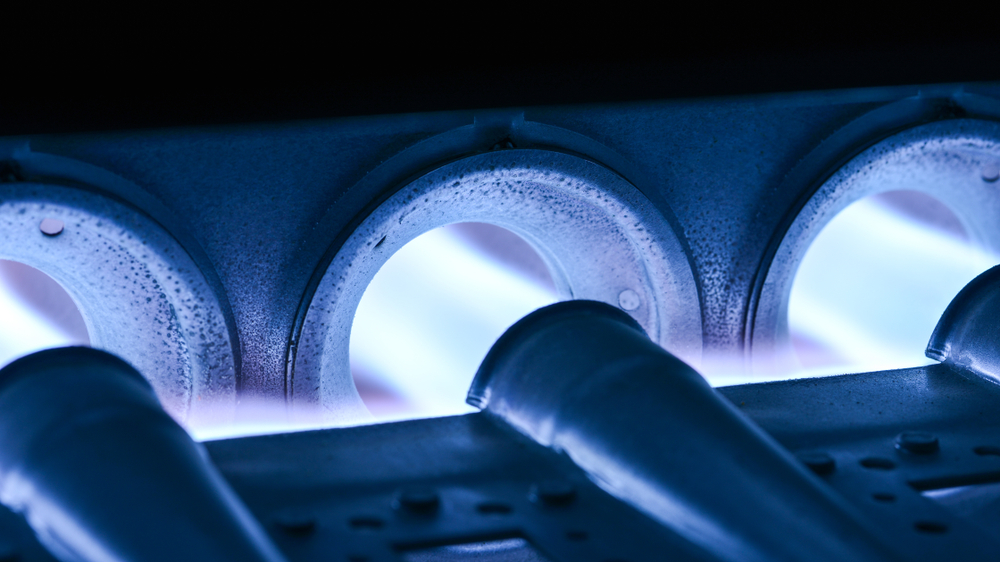- Contact Us: 513-229-0789







Your living space should be comfortable and safe year-round. If you suspect it’s a cracked heat exchanger, it could pose a significant safety risk.
This often-overlooked component plays a pivotal role in heating your home. The professionals at Air Authority explain how to know if you have a cracked heat exchanger and the steps you should take to address the issue.
A heat exchanger is responsible for transferring heat from one source to another, typically from a fuel source (like natural gas or oil) to the air circulating through your ducts.
This process is essential for maintaining a warm indoor environment, especially during the colder months.
In a gas furnace, the heat exchanger consists of a set of coiled or curved metal tubes or plates. As the burners ignite, they heat the metal surfaces of the heat exchanger. The blower then circulates air over these heated surfaces, distributing warm air.
However, if the heat exchanger is compromised, it can lead to issues, including reduced efficiency, increased energy costs, and safety concerns.
A cracked heat exchanger is a serious problem that needs immediate attention. It can allow harmful combustion gasses like carbon monoxide to escape into your home, posing a potentially life-threatening risk. Here’s how to identify if you have a cracked heat exchanger:
Strange odors: A cracked heat exchanger can produce unusual odors. If you notice a strong chemical or formaldehyde smell when your furnace is running, it’s a sign that something might be wrong.
Related Post: What’s That Burning Smell From My Furnace?
Soot or rust: Inspect the outside of your furnace. If you see soot or rust buildup on or around the furnace, it could indicate a cracked heat exchanger. Soot is a byproduct of incomplete combustion and should not accumulate in your furnace
Carbon monoxide detector alerts: Every home should have working carbon monoxide detectors. If one of these alarms goes off, it could have been triggered by your heat exchanger.
Symptoms of carbon monoxide poisoning include headaches, nausea, shortness of breath, confusion, loss of consciousness or drowsiness, blurred vision, or loss of muscle control.
Flame rollout: Watch the flames in your furnace’s burner. If you see flames rolling out of the burner area or flickering erratically, it could suggest a cracked heat exchanger, as it disrupts the proper airflow.
Physical inspection: In some cases, a visual inspection of the heat exchanger may reveal visible cracks or holes.
However, these can be challenging to spot without professional equipment.
Apart from the obvious signs of a cracked heat exchanger, there are other indicators it might be compromised. These signs may not necessarily indicate a crack but do suggest problems that need attention:
Uneven heating: If some rooms in your home are much warmer or cooler than others, it could be due to an issue with the heat exchanger.
Increased energy bills: If you notice a sudden and unexplained spike in your heating bills, your furnace may be working harder to compensate for a malfunctioning heat exchanger.
Frequent cycling: If your furnace is turning on and off more frequently than usual, it might be due to inconsistent heat production due to a failing heat exchanger.
Loud noises: Unusual noises such as banging, popping, or rumbling can be a sign of trouble within your furnace, which could include a damaged heat exchanger.
Related Post: How to Quiet a Noisy Furnace Blower (10 Tips)
If you suspect you have a cracked heat exchanger, it’s essential to take immediate action. This is not a DIY repair and should be handled by a professional HVAC technician.
A cracked heat exchanger is a serious issue that demands immediate attention. It poses safety risks to your family and can lead to reduced heating efficiency and higher energy bills.
Regular maintenance and professional inspections can help identify potential problems with your heat exchanger before they become severe. Contact Air Authority’s HVAC technicians to diagnose and address the issue, getting your heating system back on track. Get in touch with our team, or get a free second opinion.
© 2024 Air Authority, All Rights Reserved